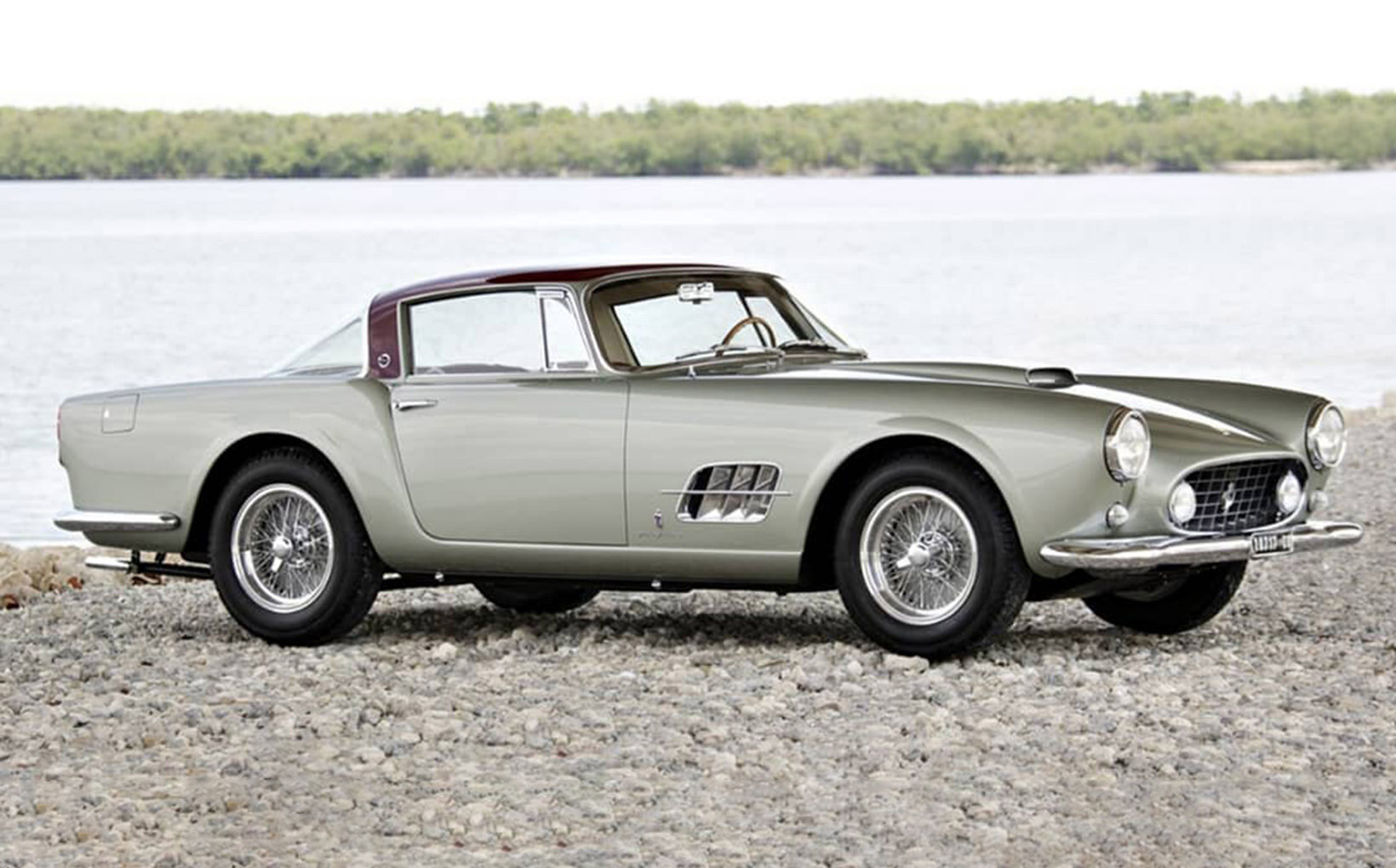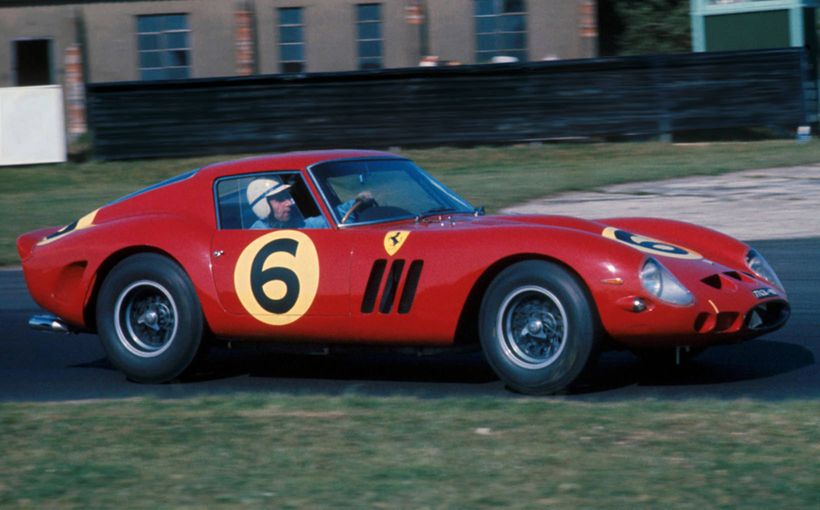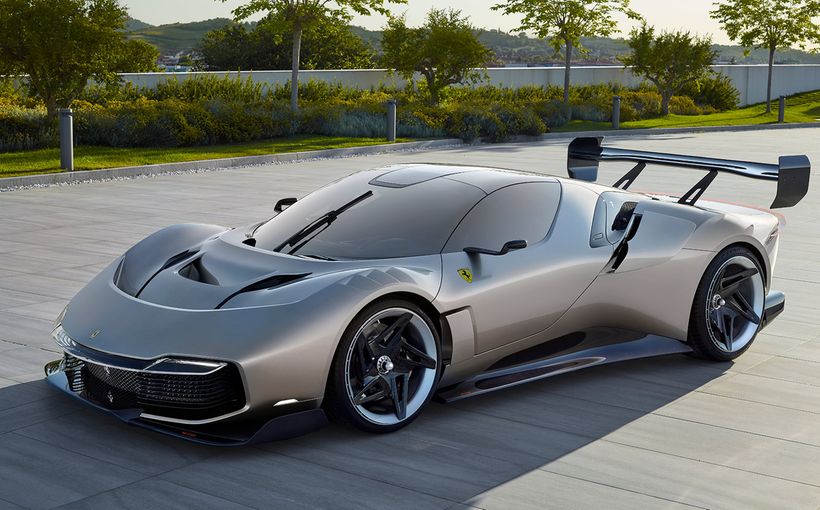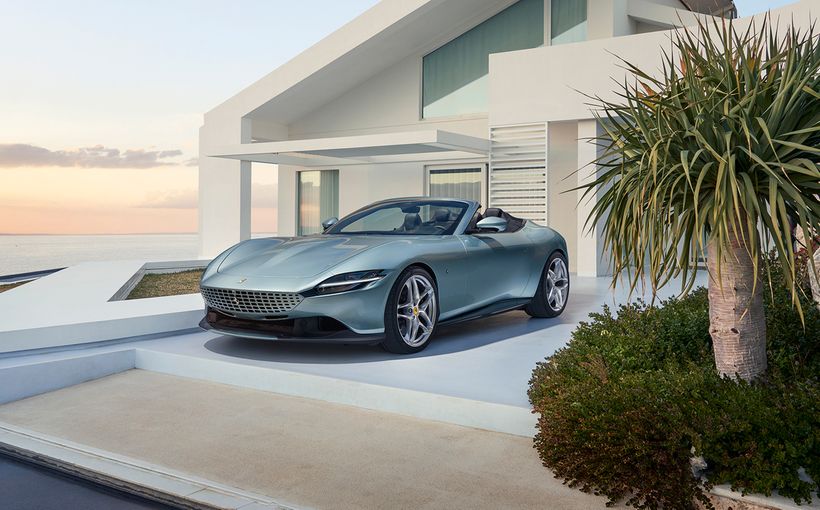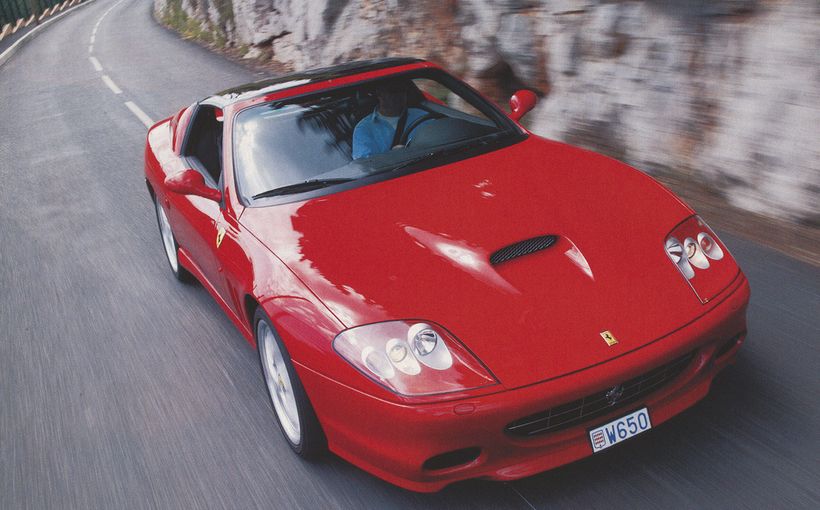Ferrari America: Italian V12 elegance with star-spangled glamour

The very rare, very expensive and very fast Ferrari America, Superamerica and Superfast breed, created for a demanding and exclusive clientele in the USA and many other countries, represented Ferrari’s top-of-the-line grand touring models from the early 1950s to the late 1960s.
All Americas shared a common design theme tailored to appeal to ‘bigger is better’ American tastes, comprising front-mounted large-displacement V12 engines, rear-wheel drive and exquisite two-seater berlinetta, cabriolet and spyder bodies or ‘carrozzerias’ crafted only by Italy’s finest coachbuilders.
In The Ferrari Legend: The Road Cars, author Antoine Prunet wrote: “The limited production (Americas) continued without interruption to satisfy the fastidiousness of a few perfectionists who demanded even more performance, comfort and refinement, and who wanted even more of an image of prestige and exclusivity than could be provided by the ‘standard’ Ferrari.”
That meant, in most cases, only a handful of each model, with each built to a customer’s requirements which ensured no two cars were identical. A rare luxury item which few in the world could afford, like Nelson Rockefeller, the Shah of Iran, Gianni Agnelli, the Aga Khan, Juan Peron, the King of Belgium and of course Enzo Ferrari to name a few.
The America project came only a few years after Ferrari established himself as an automobile manufacturer at Maranello in 1947. The young, ambitious and racing-obsessed Italian soon discovered burgeoning demand for a high-powered grand tourer bearing his prancing horse badge; the lucrative profits from which would help fund his unbridled racing ambitions.
Such a GT could also benefit directly from the racing program by using civilised versions of engines already well proven in racing at the highest levels. In other words, from Formula One to racing sports prototypes, then from racing sports prototypes to the road cars.

Hence the protocol of Ferrari grand touring models profiting from lessons learned on the race track was established, which ensured all street-driven Ferraris shared in a rich competition heritage that made all of them special. In many eyes, Ferrari was the spiritual successor to the enchanting but short-lived Bugatti marque, which shared similar principles.
The first Ferrari sports racing prototype, which planted the seed for a street-driven or ‘touring’ version, was the 125 Sport which emerged in 1947. The number in its model name denoted the cubic displacement (125cc) of one of 12 cylinders in an exquisite aluminium alloy over-square 1.5 litre V12 engine designed by engineer Gioachino Colombo.
Its 60-degree V-angle was inherently well balanced, with a single overhead camshaft for each 12-valve cylinder head and hemispherical combustion chambers. The choice of a V12 was inspired perhaps by Enzo’s admiration of the impressive Packard from the USA, but as a born racer the inherent performance benefits would not have escaped him.
“It is a fact that dividing the cubic capacity of an engine into many fractions results in a large total piston area and permits a reduction in piston stroke, a factor of great power,” wrote Prunet.
“In decreasing piston linear speed, wear and tear and the loss of efficiency due to friction are also decreased. For the same reasons, the division inherent in 12 cylinders permits high overall engine speed. Another advantage of the oversquare V12 is its reduced stroke, which permits a shorter block and therefore a lower overall height for the vehicle resulting in a lower centre of gravity.”
The chassis was a handcrafted amalgam of welded oval-section manganese chromium steel tubes, comprising two parallel side rails joined by several crossmembers and torsionally stiffened with substantial cross-bracing.

The front suspension was upper and lower wishbones with a transverse leaf spring. The leaf-spring live rear axle, with aluminium alloy centre and two-piece tailshaft, had a pair of trailing arms to eliminate spring wind-up/axle tramp under hard acceleration and an anti-sway bar concealed inside a tubular chassis cross-member. Brakes were four-wheel drums and the lever-arm hydraulic shock absorbers, also designed by Colombo, were built specially for Ferrari.
The 125 Sport established not only the architecture that would underpin the many grand tourers that would follow. It also established the practice of Ferrari producing a fully operational but unclothed chassis which would then be sent to an appointed coachbuilder and bodied to special order, either for a dealer or a private customer.
One of those anointed coachbuilders was Turin’s Carrozzeria Pinin Farina founded by the sublimely talented Battista ‘Pinin’ Farina. His seminal Cisitalia 202 created in 1947 hinted at the huge influence he would have on Ferrari design, particularly the rare and prestigious America breed.

340 America 1951-1952
The 125 Sport spawned increasingly powerful GT road variants including the 166 Sport and 166 Inter in the late 1940s. However, they were based on Ferrari’s original Colombo-designed V12, which had reached its practical limit in terms of further increases in cubic displacement by enlarging the cylinder bores.
Coincidentally, at the end of the 1949 Grand Prix season, Enzo Ferrari correctly forecast that his 1.5 litre supercharged V12 Formula One engine could not end the supremacy of the 1.5 litre supercharged straight-eight in Alfa Romeo’s Alfetta in 1950, which was also to be the first year of the FIA’s prestigious World Driver’s Championship for F1 cars.
So, Ferrari hedged his bets. The engine rules at the time allowed constructors a choice of up to 1500cc with forced induction, or up to 4.5 litres naturally aspirated. So, he commissioned another talented engine designer in Aurelio Lampredi to produce an evolution of the existing Colombo V12 that could accommodate this much larger displacement.
That meant, primarily, that the spacing between cylinder bore centres had to increase from 90mm to 108mm. This resulted in a 130mm increase in cylinder block length from 940mm to 1070mm.
Another innovation in the Lampredi ‘long block’ design was its non-detachable cylinder heads. The cylinder liners extended into the heads to ensure maximum sealing strength, to cope with sky-high compression ratios created by volatile alcohol-based racing fuels permitted at the time.
Competition development progressed rapidly throughout 1950, from an initial 3.3 litres displacement at the Mille Miglia to 4.1 litres at the Swiss Grand Prix to the definitive 4.5 litres at the Italian Grand Prix by September 1950.

A Lampredi 4.1 litre sports prototype called the 340 America was announced that same year. It was an intriguing name for a burgeoning European manufacturer to adopt, but Ferrari was determined to make the huge North American market aware of this new Italian brand with a large capacity V12 engine tailored, it would seem, to appeal to the USA's automotive mindset.
A grand touring version of the 340 America arrived in 1951. Interestingly, given that its primary export market was LHD, the street version retained the RHD configuration of the sports racing versions.
So, Ferrari’s first ‘civilised’ use of the Lampredi V12 in the 340 America grand tourer was fed by three 40mm Weber twin-choke carburettors, producing 220bhp at 6000rpm and a stunning top speed of 240km/h (150mph). All of those prancing horses galloped to the rear wheels through a single-plate clutch and five-speed gearbox.
The small number of 340 America road cars were predominantly styled and bodied by Ghia and Michelotti/Vignale coachbuilders, creating a variety of two-seater fastbacks, spyders and 2+2 coupe styles for Ferrari’s exclusive clientele. Less than two dozen 340 Americas were built (22 units) and historical records show that only eight of those were street versions.

342 America 1952-1953
The sports racing version of the 340 America was nearing the end of its competitive service in 1952, so as the European winter approached it was decided to build a more luxurious touring version to replace the 4.1 litre 340 America on the street.
The new 2650mm wheelbase 342 America retained the 340’s robust tube-section chassis frame design but with wider front and rear tracks and a switch to LHD. There was also a new four-speed full-synchromesh gearbox and stronger differential.
Achieving greater flexibility at the slight expense of power (200bhp at 6000rpm), the emphasis for the 342 America was on fast and luxurious grand touring. Only six were built in less than four months, which also marked a significant shift in Ferrari’s preferred coachbuilder.
Pinin Farina was commissioned to body no less than five of them (a Vignale cabriolet was the sixth). This comprised three coupes and two cabriolets of a similar style, with dual air-scoops on the bonnets and large protruding ‘egg-crate’ style grilles. The last 342 America, a Pinin Farina cabriolet, was fitted with a larger 4.5 litre Lampredi V12. Clearly, bigger Ferraris were on their way to the USA.

375 America 1953-1955
Ferrari focused on two new grand touring models for 1953 being the 250 Europa and 375 America. Although they shared similar design themes, their objectives were different. The lighter and more agile 3.0 litre 250 Europa was tailored for tight and twisty European roads, while the 4.5 litre 375 America was designed to shine on American highways.
The latter’s expansive 2800mm wheelbase was the longest used on a Ferrari to that point, which required a new chassis design with much greater rigidity strongly influenced by developments in the latest sports/racing prototype variants. However, the venerable front transverse leaf spring and lever-arm shocks were retained.
A cylinder bore increase from 80mm to 84mm raised the oversquare Lampredi V12’s cubic displacement to 4522cc, which with 8:1 compression ratio and three 40mm DCF Weber twin-choke carburettors was rated at 300bhp at 6300rpm.
By comparison, the closely related sports/racing 375 Mille Miglia variant had 340 bhp at 7000rpm, with 9:1 compression and three Weber four-barrel carbs. So, true to Ferrari’s trickle-down effect, the 375 America engine was a civilised version of the sports/racing engine which was in turn a derivative of the 1950 F1 engine.

Matched with a new four-speed full-synchromesh gearbox with 1:1 top gear, a rugged multi-plate clutch and a choice of three final-drive ratios, the 375 America allowed scintillating top speeds ranging from 232km/h to 250km/h. These were seriously high terminal velocities which only a handful of road cars were capable of in the 1950s.
Again, with this rare and exclusive grand tourer, Pinin Farina appeared to have all but a monopoly on the Americas. The Turin coachbuilder bodied nine of the dozen 375s built, all done in a similar style but with minor customer variations which ensured each was also unique. Vignale did the remaining three cars.
There was also greater choice of colours, enhanced by increasing use of metallic paints. Even so, the Pinin Farina Americas were characterised mostly by subtle hues, which created a look of great class and understated elegance in stark contrast to the bright colours used on the competition cars.

410 Superamerica (Series I & II) 1956-1957
The stunning 410 Superamerica replaced the 375 with significant advances in engine, chassis and body design that justified its ‘super’ status, with the largest engine fitted to a Ferrari to that point and clearly aimed at the US market.
The Lampredi V12 was fitted with new cylinder liners that again increased the bore measurement, this time to 88mm, resulting in 410cc per cylinder or a total displacement of just under 5.0 litres (4962cc).
Output was factory rated at a formidable 340bhp at 6000rpm. With a revised shift pattern for the four-speed gearbox and a choice of three final-drive ratios, claimed top speeds ranged between 220km/h and 260 km/h at 6000rpm - or 160mph-plus.
The 0-100km/h sprint took a scant 5.6 seconds, making it one of few production cars capable of such scintillating acceleration in the 1950s. A sobering comparison is the legendary Mercedes-Benz 300 SL Gullwing of the same era, which took 7.0 seconds.
The 410 SA’s 2800mm wheelbase chassis with a 130mm increase in track width was also revised; coil springs replacing the venerable front transverse leaf spring.


The 410 SA again demonstrated the mastery of Pinin Farina, with styling that was both aggressive and refined with minimal use of chrome, a low elliptical egg-crate grille with driving lights, a distinct hip that accentuated the muscular rear quarters and the refined elegance of a large wrap-around rear window with generous glass area.
Only 14 examples of the 410 SA were produced, which served to highlight the type’s exclusivity on a global scale. About nine of the 14 were bodied by Pinin Farina, sharing a similar coupe body style but with subtle differences in finish and decoration which ensured each example was unique.
At least another four 410 SAs received bodies by other coachbuilders, highlighted by the stunning coupe penned by Ghia’s chief stylist Giovanni Savonuzzi who applied similar styling themes to those he’d created months earlier for Chrysler’s widely acclaimed Gilda and Dart dream cars, with spectacular results.

Another stand-out 410 SA was Pinin Farina’s ‘Superfast’ on a shortened 2600mm wheelbase. This futuristic ‘space age’ design in 1956 showed the global influence of contemporary US design themes, as its streamlined shape included tail fins which admittedly were not to everyone’s taste.
It also had a unique version of the type’s 4.9 litre V12 with larger 42mm carburettors and 24 spark plugs (two per cylinder) which had first been trialled in the 375 F1 car of 1952.
The Superfast’s influence was immediate, with the shorter 2600mm wheelbase adopted as standard for all 410 SAs beginning in 1957. These cars, of which only about seven examples were produced and all bodied by Pinin Farina, were unofficially identified as Series IIs which spawned two more special bodies.


One was by Modena’s Scaglietti with strong US influence evident in its tail fins and generous use of chrome and stainless-steel highlights. The other, by Grugliasco, displayed a unique ‘Ferrari 4.9 Superfast’ inscription on its boot-lid. It was sold to a wealthy US enthusiast who kindly allowed Sports Car Illustrated to publish a road test review in its September 1958 issue.
Prunet: “It was, of course, a concert of praises. The main plaudits went to the lines, to the finishing, to the precise steering, to the flexibility of the engine and, above all, to the acceleration, the most brilliant ever recorded by the American magazine, being 13.9 secs for the standing quarter mile.”

410 Superamerica (Series III) 1958-1959
The 410 SA Series III differed from the 1956-57 models in enough key areas to be considered a new model. There was a complete redesign of the 4.9 litre cylinder heads based on the competition success of the Scuderia’s Testa Rossa sports prototype in 1957. Relocation of the 12 spark plugs allowed for a more efficient combustion chamber design and considerable power increase. With three 42mm Weber DCF twin-choke carburettors and 9:1 compression, the power rating rose to a spine-tingling 360bhp at 7000rpm with 0-100km/h dropping 0.1 secs to 5.5 secs.
The power increase triggered some important chassis revisions. Although the SIII retained the 2600mm wheelbase, its track width increased by 100mm and the size of the brake drums grew to the same diameter as those used on the sports/racing prototypes before they updated to discs.
In 1959 Pinin Farina became Pininfarina and confirmation of its preferred status with Maranello was that it bodied all of the 410 SA SIIIs (only 12 to 15 built) and all these magnificent machines were sold to the USA.

400 Superamerica 1959-1964
In January 1960 a noticeably stocky cabriolet was unveiled called the 400 Superamerica, which heralded a significant departure from the bigger-is-better American mindset in both chassis and engine.
Beneath its seductive Pininfarina lines were chassis modernisations highlighted by a shorter 2420mm wheelbase, Koni telescopic shock absorbers and a Dunlop disc brake inside each wire wheel.
The long-block, fixed-head Lampredi V12, which had been conceived as a 4.5 litre Formula One engine in 1950 and the power source of all Americas and Superamericas up to the 410, was shelved after a decade’s service.
Its replacement retained much of the architecture of the original 1946 Colombo V12 in terms of its more compact external dimensions, 90mm cylinder bore-centre spacing and removable cylinder heads, with total displacement of 3967cc. Therefore, the new 400 model designation broke with tradition by reflecting about one-tenth of the engine’s total displacement rather than its single cylinder dimension (331cc).
Even so, the new V12 had performance befitting such a premium offering with 8.8:1 compression, three 42mm Weber DCN carburettors and a factory rating of 340bhp at 7000rpm. The four-speed gearbox was also fitted with an electrically-actuated overdrive unit which in effect created a fifth gear for effortless high-speed travel.
The mere half-dozen 400 Superamerica cabriolets were built within a year, sharing the same Pininfarina design but with variations tailored to each client’s requirements in finish and decoration. These included hardtops on some of them.

Those six cabriolets, though, had nothing to offer that was breathtakingly new. That reaction was reserved for the Pininfarina stand at the 1960 Turin Motor Show, with an experimental creation called Superfast II (above) which boldly proposed a new style of Ferrari coachbuilding from this innovative firm.
The prototype feature aircraft-inspired streamlining, from its narrow front air intake through the graceful curves of its bonnet and roof line to its exquisitely tapered tail. The rear wheels were shrouded by side-skirts and the headlights concealed under pop-up lids to smooth airflow.
Revisions of this aerodynamic masterpiece evolved into the first 400 Superamerica coupe in 1961. It was called the Coupe Special Aerodinamica, with the most noticeable revisions from the prototype being the rear wheel skirts, along with headlights now fixed under clear streamlined covers.
Only 13 Superfast II variants of the 400 Superamerica were delivered. Superfast III and Superfast IV followed with further variations in glasshouse, character lines and headlights. In 1962 the 400 Superamerica’s 2420mm wheelbase returned to the longer 2600mm dimension of the last 410 SAs, primarily to provide more interior room. However, this only resulted in more luggage space behind the seats, because a 2+2 was not produced.
With numerous detailed changes to bodywork and fittings, only about 19 of these long-wheelbase coupes (including just four cabriolets) were built. Total 400 Superamerica production across all SWB and LWB chassis was only 48 examples.

500 Superfast 1964-1966
The true replacement for the 400 Superamerica arrived in 1964. Prunet: “With the 500 Superfast, the refinement, the finish, the comfort, and the immense power which seemed a paradox with such luxury, Ferrari and Pininfarina had, without question, created quite well the Ferrari ‘Royale.’”
Prior to the 500 Superfast, there had been a transitional model launched late in 1963 called the 330 America, which was in essence the Pininfarina body of the 250 GT 2+2 fitted with the 4.0 litre V12 from the 400 Superamerica. However, it had a brief production life.
The 500 Superfast, on its slightly longer 2650mm wheelbase, shared obvious styling cues with its 400 SA berlinetta ancestors. However, its smooth flanks were devoid of the character lines and other adornments of earlier cars. The elegant tail was truncated by a vertical panel that reduced the sloping angle of the boot-lid and the headlights were no longer shrouded by transparent covers.
The 500 Superfast’s regal status in the history of grand touring Ferraris was also evident in the creation of a unique engine (Type 208), featuring the same 108mm cylinder bore centre-spacing as the Lampredi V12 but this time with removable heads.

Total displacement of 4961cc was close enough to 5000cc to validate its 500 model name. It was also immensely powerful, with 9:1 compression and a trio of 40mm Weber DCZ/6 carburettors producing an enormous 400bhp at 6500rpm. With its slippery shape, top speed was 280km/h (174mph).
The 500 Superfast was produced in very limited numbers and in two series, with the first reaching a total of about 25 examples. Series II, of which there were only 12 made, brought significant revisions including a new five-speed gearbox which made the overdrive unit redundant, top-pivot pedals and the 11-louvre engine bay vents on each side were replaced with simpler three-louvre designs which were a key SII identifying feature.
So, across the two series, less than 40 produced, with each body hand-built with meticulous care at Pininfarina. They were almost identical but subtle variations in body fittings like taillights, doorhandles etc made each one unique and highly desirable.


365 California 1966-1967
The successor to the 500 Superfast was unveiled in prototype form at the 1966 Geneva Motor Show. This luxurious Pininfarina cabriolet also represented the end of the line for Ferrari’s sublime America series of V12 grand tourers.
Sharing its predecessor’s 2650mm wheelbase, the cabriolet’s engine was derived from the V12 used in the 365 P sports prototypes during the 1966 racing season and kept the same bore and stroke dimensions.
Therefore, its 365 designation heralded a return to Ferrari’s tradition of basing model names on the cubic displacement of one cylinder, which in this case was a total engine displacement of 4390cc. Power was rated at 320bhp at 6600rpm and the 500 Superfast’s five-speed gearbox was retained.
Styling was signature Pininfarina with a slender profile and discreet longitudinal side creases. It also presented several design ideas which would surface on later production models from Maranello. Most notable here were the elegant tapered side scoops; a design feature that would surface on future mid-engine models.
The 365 California’s front and rear styling showed strong 500 Superfast influences. However, the headlights were now covered and the truncated tail was a masterpiece of fresh angular lines and matching tail lights. Between 1966 and 1967, only 13 of these cabriolets were produced.

812 Superfast (2017-present)
At the 2017 Geneva Motor Show, 50 years after the 365 California ceased production, Ferrari stunned the world by creating a spiritual successor to the iconic V12-powered America grand tourer - the 812 Superfast.
Ferrari avoided the use of forced induction or hybrid powertrains because a modern-day interpretation had to be true to its origins: a rear-wheel drive berlinetta with a large displacement, naturally aspirated and prodigiously powerful V12. The massive 6.5 litre (9496cc) F140 V12 engine surpassed the wildest expectations, with an implausible 588kW (789bhp) at 8500rpm and 718Nm (530 ft/lbs) at 7000rpm.
At launch Ferrari claimed it was the most powerful naturally-aspirated production car engine ever made, which was immortalised in its three-digit model name; 8 reflected 800 PS (European horsepower) and 12 the number of cylinders. The engine’s enormous output reached the rear tyres through a dual-clutch seven-speed F1-style automated manual gearbox.
Tyres were Pirelli P Zero, 275/35 ZR20 front and 315/35 ZR20 rear. The 20-inch diameter wheels were required to clear enormous 398mm front and 360mm rear Brembo carbon-ceramic disc brakes shared with the LaFerrari.

The power-to-weight ratio was just 2.2kg per PS and it boasted a near perfect 47F/53R weight distribution. The bodywork’s mesmerising contours were significant in high-speed airflow management, given the 812 Superfast could do 0-100km/h in just 2.9 seconds with a top speed of 340km/h - or a shattering 211mph on the old scale.
In 2018 the 812 Superfast formed the basis of a limited-edition variant called the Monza SP, with carbon fibre construction and open-top body inspired by iconic Ferrari sports racing prototypes like the 750 Monza.
And in 2019 the 812 Superfast was joined by an open-top version called the 812 GTS, equipped with an electric folding hard-top roof that took 14 seconds to lower and store under a neat tonneau cover between the roof buttresses. Although the required chassis reinforcing added 75kg to the kerb weight, slightly shorter gearing ensured the 812 GTS suffered no performance penalty compared to its fixed-roof stablemate.
So, after almost seven decades, one of the prancing horse’s most iconic and alluring models continues to wow enthusiasts with its awe-inspiring front-engine V12 performance, peerless styling and an exclusive clientele.

